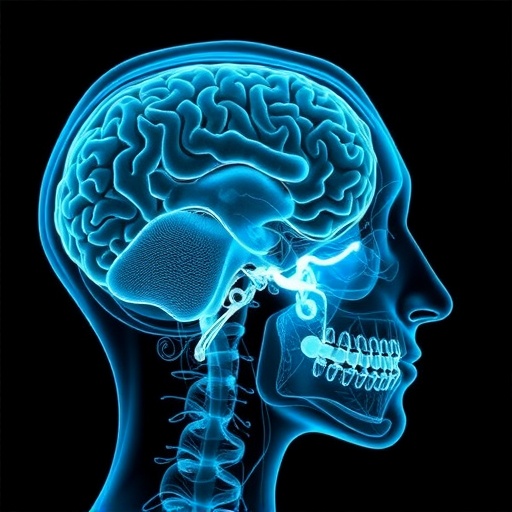In the evolving landscape of post-viral syndromes, a recent case study in BMC Psychiatry unveils a compelling intersection of neurological and psychiatric sequelae following COVID-19 infection. The report details the clinical course of an elderly female patient who developed post-COVID-19 encephalopathy coupled with oral cenesthopathy, a rare neuropsychiatric condition characterized by distressing oral sensations without detectable physical abnormalities. This unique case underscores the multifaceted and prolonged impact of SARS-CoV-2 on the central nervous system, compelling the scientific community to deepen its understanding of long COVID syndromes.
Post-COVID-19 encephalopathy emerges as a significant neurological complication after acute viral infection, marked by cognitive impairments such as memory loss, attention deficits, and executive dysfunction. These symptoms are thought to result from a complex interplay of direct viral neuroinvasion, immune-mediated neuroinflammation, and cerebrovascular dysfunction. In this particular case, the 73-year-old patient first presented with cognitive decline, an early indicator of encephalopathic changes that have been increasingly documented in COVID-19 survivors worldwide.
The progression from cognitive deficits to neuropsychiatric manifestations in this patient highlights the intricate relationship between brain injury and psychiatric disorders. Approximately sixteen months following her initial infection, she developed major depressive disorder, a common yet debilitating consequence observed in post-viral syndromes. Notably, she also exhibited oral cenesthopathy, an unusual and poorly understood condition characterized by persistent abnormal oral sensations, such as feelings of foreign bodies or anomalous tactile phenomena, in the absence of detectable physical lesions or pathology.
Oral cenesthopathy typically occurs in individuals with underlying psychiatric disorders, including schizophrenia and affective disorders, yet its pathophysiology remains enigmatic. Hypotheses suggest aberrant sensory processing in the brain’s somatosensory regions or disrupted central nervous system circuits that modulate body awareness. The emergence of this condition in a post-COVID-19 context suggests that the viral insult may provoke or exacerbate sensory misperceptions through neuroinflammatory or neurodegenerative mechanisms.
Comprehensive diagnostic workup was pivotal in ruling out alternative causes that could explain the patient’s neurological and psychiatric symptoms. Autoimmune encephalitis, a neuroinflammatory disorder often associated with psychiatric disturbances, was excluded through antibody testing and imaging studies. Additionally, Creutzfeldt-Jakob disease (a rapidly progressive neurodegenerative disorder) and structural brain abnormalities were systematically ruled out by thorough neuroimaging and cerebrospinal fluid evaluations, thereby strengthening the link between SARS-CoV-2 infection and the patient’s clinical presentation.
Pharmacological intervention aimed at symptom mitigation involved a combination of aripiprazole, an atypical antipsychotic, and carbamazepine, a mood stabilizer and anticonvulsant. Aripiprazole’s partial dopamine agonism may help recalibrate disrupted neurotransmitter pathways implicated in both depression and cenesthopathy, while carbamazepine’s modulation of neuronal excitability could attenuate aberrant sensory experiences. However, therapeutic benefits were limited by side effects, reflecting a common challenge in managing complex neuropsychiatric sequelae of COVID-19.
The case elucidates the emerging spectrum of long COVID syndrome, wherein a heterogeneous array of neurological and psychiatric conditions persist or manifest months after initial infection. It brings attention to the chronic and often debilitating nature of these sequelae, which can evade diagnosis due to their rarity and atypical presentations. Such cases underscore the necessity for heightened clinical vigilance, interdisciplinary assessment, and tailored therapeutic strategies.
From a mechanistic standpoint, this report stimulates intriguing speculation about the potential pathways through which SARS-CoV-2 causes enduring brain dysfunction. Primarily, the virus may disrupt blood-brain barrier integrity, permitting neurotoxic immune components to infiltrate the central nervous system. Additionally, microvascular injury and hypoxic-ischemic insults could compromise neuronal viability, leading to widespread synaptic dysfunction and aberrant sensory integration.
Research into neuroinflammation has implicated cytokine storms and persistent immune activation as contributors to brain tissue damage and neuropsychiatric symptomatology. The persistent elevation of pro-inflammatory mediators may induce maladaptive neuroplasticity, altering cognition and mood regulation. Such inflammatory states could also sensitize neural pathways responsible for somatic perception, providing a plausible substrate for oral cenesthopathy.
The case also challenges the conventional diagnostic boundaries between neurological and psychiatric illnesses, suggesting a spectrum rather than discrete categories. Post-COVID-19 encephalopathy that progresses to depression and somatic delusional syndromes exemplifies how viral neuropathology can precipitate complex neuropsychiatric conditions. Thus, an integrated neuropsychiatric framework is essential for understanding and managing long COVID patients.
Clinically, this highlights an urgent need to develop standardized protocols for assessing cognitive and psychiatric symptoms in post-COVID care. Early identification of neuropsychiatric signs can facilitate prompt intervention and potentially mitigate long-term disability. Multimodal treatment regimens combining pharmacotherapy, neurorehabilitation, and psychological support will likely be required to optimize outcomes.
Furthermore, this case underscores significant gaps in current knowledge and therapeutics. While symptomatic management offers partial relief, the etiology-driven treatments for post-COVID neuropsychiatric syndromes remain elusive. Future research should prioritize elucidating the molecular underpinnings of virus-induced brain injury and exploring novel agents that target neuroinflammation, neuronal repair, and synaptic modulation.
As the global burden of long COVID continues to escalate, reports like this serve as sentinel evidence of the pandemic’s lingering shadow on neurological and psychiatric health. They demand concerted efforts from neuroscientists, psychiatrists, and infectious disease specialists to unravel the complex pathophysiology and develop comprehensive care models. Such interdisciplinary collaboration is paramount to addressing the multifarious challenges posed by post-COVID neuropsychiatric conditions.
In conclusion, the documented intersection of post-COVID-19 encephalopathy and oral cenesthopathy in this elderly patient provides critical insights into the virus’s potential to induce intricate and long-lasting neuropsychiatric disturbances. This rare clinical presentation not only expands the phenotypic spectrum of long COVID but also prompts urgent questions about optimal diagnostic and therapeutic approaches. As the scientific community grapples with these challenges, the imperative to advance understanding of COVID-19’s neurological aftermath becomes ever more pressing.
Subject of Research: Post-COVID-19 neurological and neuropsychiatric complications, specifically encephalopathy and oral cenesthopathy.
Article Title: Case report: post COVID-19 encephalopathy and oral cenesthopathy.
Article References:
Wu, JI., Lee, SH., & Chen, PJ. Case report: post COVID-19 encephalopathy and oral cenesthopathy. BMC Psychiatry 25, 351 (2025). https://doi.org/10.1186/s12888-025-06789-1
Image Credits: AI Generated




